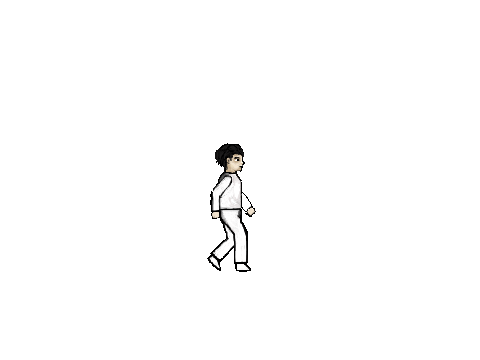IVETA STRIPEIKAITE
2D/3D Artist

Annabelle's Asylum
Annabelle's Asylum - Oct 2014
Protelum: Iveta Stripeikaite, Andrew Finlay, Megan Friend, Rahul Patel, Janos Torok and Alexandru Maitadelico.


Annabelle's Asylum is a 2D horror puzzle mini game made on Scratch 1.4 and optimized for the Raspberry Pi.
Click the video on your right to see a quick playthrough of Annabelle's Asylum or try out the game yourself by click 'PLAY'.
TECHNICAL SPECS:
Minimum requirements for web:
*Chrome 35 or later, Firefox 31 or later, or Internet Explorer 8 or later)
*Adobe Flash Player version 10.2 or later installed.

The Game Idea
A man is bound in an asylum for all his days. But one fresh morning his eyes meet hers, a woman that will resue him from his own madness. They fall in love. Years have passed, love has grown. One early morning a nurse approaches her to tell her that she is going to be transferred to another facility across countries and seas. She collapses to the floor, droplets of tears run down her face as she is thinking of ending it all. Her boyfriend crosses her mind for a second. She thinks to herself: she won't die alone... Her eyes turn black, her smile grows bigger and her head turns slower and slower mapping the horizon. She goes on her last pursue of love; She is going to kill her lover. His girlfriend is uncontrollable. She is in pursuit of him. He has little to no time to escape the asylum during this commotion and save himself. "Tick Tock, my love".
GAME FEATURES
Current Features
-
Various puzzles that have to be performed in a certain manner to win the game
-
Looped soundtrack and sound effects
-
Hint system (gives u visual feedback in shape of text to help the player find his way around the game)
-
The player can read the storyline in the menu. Storyline again mentioned in the first few seconds of the game
-
Logical flow of the game and levels
Possible Updates
-
Flashlight which follows the cursor and allows the player to see around them
-
Multiple endings based on the choices you make in the game
-
Hint system - the flashlight blinks in a certain area to give a clue on what to do next
-
Interaction with different characters
MY PART
At the start of the project we didn't really have a project leader, though as we went on with the project Andrew and I naturally took over as project leaders. I've been primarily in charge of making assets and code for the store room and the basement. Since the project was running a bit slow, I have also went along and made assets and partial code for the cell, corridor and canteen. I was in charge of making the usability test and had implement the sound track in the game. My other responsibilities were to help my team with any bugs and troubleshooting.
DESIGN
 |
|---|
 |
 |
 |
 |
 |
 |
 |
 |
 |
 |
 |
 |
We have used a simple and cartoony 16-bit artwork style which was inspired by a game called "Homesick". We thought that that sort of style would work great with our storyline and make the game original. I have been using Photoshop and Illustrator to create my assets. I've used the same doors, walls and floors to maintain tha same feel throughout the game. However since all of us have drawn different levels and my canteen, corridor and cell were not implemented, we still had to make the game look as if it has the same artwork throughout the game. So we decided to use the walls and vents that I've made in every level where it was necessary.
PROGRAMMING
 3.0.png |  1.0.png |
|---|---|
 2.0.png |
From the start of the project we had to consider our target hardware (Raspberry Pi B+) and its limitations. We also had to consider the limitations of using Scratch 1.4 since it cannot handle a lot of loops or high quality images, In my code I have used broadcast and receive event listeners in order to save processing power by the Raspberry Pi since it only uses the code when needed and disposes of it after use. This was one way of avoiding loops. The only loop that we do use in our game, which we could not avoid since it is being used throughout the game is the walk cycle code.
LONG TERM GAINS
Seeing that this my first coding experience I have enjoyed learning the concepts of programming: the logic, the target hardware and software restrictions and the ability to overcome bugs. I have learnt a lot about teamwork and what it takes to make a game from start to finish. I have really enjoyed not having a team leader, just for the fact that we all collectively made team decisions and were involved in every moment of the game development stages. That is, in my view the most important aspect of game development, where each member of the team is aware of bugs, problems, ideas and we can work together to make our game a success. I have made real friends and am very excited to work with them again in the future.